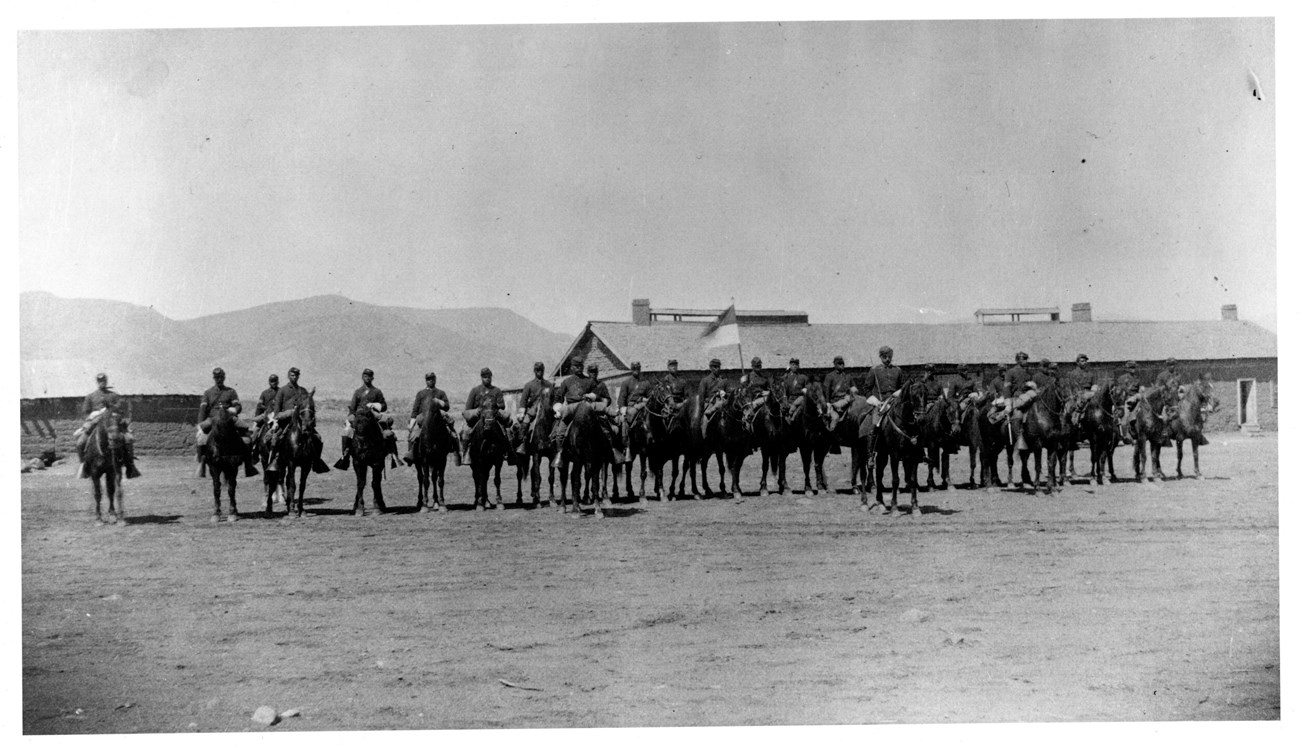
Arizona Historical Society, Fort Verde photographs, PC 82, Folder 1, #49601. African American soldiers have served the United States since the Revolutionary War. During the Civil War, many escaped or emancipated slaves fought for the Union, as well as many free black men. In the Confederate States of America, slaves were sometimes forced to fight for the South. After the Civil War ended in 1865, Congress authorized six all-black Army units in 1866: two cavalry troops and four infantry regiments. The four infantry units (38th, 39th, 40th, and 41st Infantry) were later consolidated into the 24th and 25th Infantry. Men who joined the 9th and 10th Cavalry or the 24th and 25th Infantry had an opportunity for equal pay to their white counterparts, as well as adventure. Many black men fought in the Civil War, and continued their military career after Congress established the all-black units. Troops E, H, and I of the 10th Cavalry each spent a few months in southeast Arizona, and many of the same men later fought in Cuba and the Philippines, during the Spanish American War.
If black enlisted men were literate, they could reach the rank of First Sergeant, but no higher. The US Army did not have a commanding black officer until 1877 when Henry Ossian Flipper graduated from the United States Military Academy at West Point and attained the rank of Second Lieutenant. If soldiers were not able to read and write, they could take classes from the Army chaplain, who provided some basic education as well as spiritual guidance. |
Last updated: August 19, 2018
